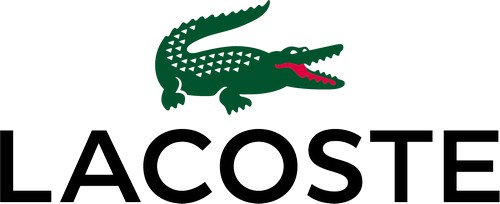The Marketing mix of Lacoste analyses the 4Ps of Lacoste, which include the Product, Price, Place, and Promotion of Lacoste. Lacoste is associated with the Lifestyle and Retail industry and deals in accessories and apparel. It is of French origin and was founded in 1933 by its famous co-founders, Andre Gillier and Rene Lacoste. The brand is easily recognizable through its logo of the green crocodile, as Rene Lacoste was popularly hailed by his fans as the Crocodile. In 2012, the brand changed its ownership as Maus Freres purchased it. Lacoste faces fierce and stiff competition now from several lifestyle brands and sportswear companies like the following-
- Zara
- H&M
- Reebok
- Nike
- Tommy Hilfiger
About Lacoste
- Type: Fashion brand
- Industry: Clothing
- Founded: 1933
- Founder: Rene Lacoste, André Gillier
- Headquarters: Paris, France
- Area served: Worldwide
- Key people: Thierry Guibert, CEO
- Number of employees: Over 10,000
Table of Contents
Lacoste Product Strategy
Lacoste is a vintage company known for its niche look, premium quality, designs, and modern comfort. It is undoubtedly a leader in the premium-casual-wear segment, and this is reflected in its modern collections via unique style and natural elegance. The company started its operations by producing tennis shirts with an embroidered crocodile logo on the chest. It expanded its product portfolio further to include shirts for sports like sailing and golf. In 1951, Lacoste introduced color shirts besides the already available tennis-white shirts. With time, it expanded its portfolio to include several items like-
For men –
- Apparel includes sportswear, trousers, coats, shorts, jackets, sweatshirts, t-shirts, knitwear, polo and shirts
- Footwear includes canvas, plimsolls, boat shoes, loafers, boots, city shoes and trainers
- Accessories include socks, underwear, fragrances, sunglasses, watches, hats, and caps
- Leather goods include belts, wallets and bags
Women
- Apparel includes dresses, shorts, skirts, jackets, coats, knitwear, tops and sportswear.
- Footwear includes trainers, canvas, and boots.
- Accessories include caps, scarves, hats, watches, fragrances, sunglasses and gloves
- Leather goods include belts and bags
Kids-
- For both boys and girls, the brand offers choices in apparel, footwear, and accessories
Lacoste, a renowned French company, is known for its diverse product mix that primarily revolves around high-end clothing, footwear, perfumes, leather goods, watches, eyewear, and home textiles.
The product mix of Lacoste in 2023 is as follows (Source)
- Clothing: Lacoste is perhaps best known for its iconic polo shirts, which feature the distinctive crocodile logo. Their clothing line also includes shirts, sweaters, dresses, skirts, shorts, and trousers, often recognized for their classic, sporty designs and high-quality materials.
- Footwear: The brand offers a range of shoes, including sneakers, loafers, sandals, and boots. These shoes are designed for comfort and style, suitable for sports and casual wear.
- Perfumes: Lacoste has a line of fragrances for men and women, known for their fresh, sporty scents that align with the brand of Lacoste’s products and athletic heritage.
- Leather Goods: This includes a variety of bags, wallets, and belts. These products often feature minimalist designs with the signature of mix of Lacoste and timeless elegance and are crafted from high-quality leather.
- Watches: Lacoste produces a range of watches known for stylish designs that often incorporate elements of the brand’s sporty aesthetic.
- Eyewear: This category includes sunglasses and prescription frames designed with classic and contemporary styles.
- Home Textiles: Lacoste also offers a range of home textiles like towels and bed linens, which are made with the same attention to quality and detail as their clothing items.
The brand’s product mix blends elegance, comfort, and distinctive style and functionality, staying true to its sporty yet chic heritage.
Lacoste Place Strategy
Lacoste is a globally recognized brand with a product presence in nearly one hundred and twenty countries like Australia, Canada, India, and China. The brand introduced its products in the United States market for the first time in 1952, and by the 1970s, it had gained immense popularity. The company has a strong community with ten thousand employees responsible for the brands’ worldwide distribution, production, design, and communication.
It operates using its boutiques at independent places and in trendy departmental stores like Halls, Belk, Macy’s, and Nordstrom. Lacoste products are readily available using 10,600 wholesale point-of-sales. It also sells its products using 11 online outlets that meet client requirements with a single click.
Lacoste Place Strategy is as follows:
- Global Retail Presence: Lacoste operates a vast network of boutiques popular stores worldwide, strategically located in high-end shopping districts and upscale malls to attract its target market of affluent consumers.
- Selective Distribution: The brand employs a selective distribution strategy, choosing to sell its products through a limited number of retailers, including prestigious department stores and specialty boutiques, to maintain exclusivity.
- Online Sales Platform: Lacoste has embraced e-commerce, offering its customers a full range of products through its website and selected online retailers, thereby expanding its business and reach to a global audience.
- Flagship Stores in Major Cities: The brand maintains flagship stores in major cities around the world, such as Paris, New York, and Tokyo, which not only serve as retail spaces but also as icons of the brand’s prestige and heritage.
- Shop-in-Shop Concept: Lacoste often utilizes a shop-in-shop approach within high-end department stores, allowing for brand visibility and accessibility while maintaining an exclusive appeal within a larger retail environment.
Lacoste Pricing Strategy
Lacoste has targeted sports personalities and fashion-conscious people as its target audience of customers. They prefer customers who have high buying power and who do not hesitate before purchasing because of a price tag. Owning a product from Lacoste is a status symbol, and buyers do not hesitate to flaunt it through their purchases. It is an expensive, trendy brand name that deals in high-quality, premium items. The upscale clothing company also has adopted a premium pricing strategy for its products as it is sure of its customer loyalty. The Rich clientele is the main reason product prices seem reasonable and affordable to its potential and permanent customers.
Lacoste’s pricing strategy reflects its positioning as a premium lifestyle brand, carefully crafted to align with its brand image and target market. Here’s an overview:
- Premium Pricing Strategy: Lacoste adopts a premium pricing model, setting prices higher than many competitors. This strategy not only reflects the high quality and heritage of the brand but also helps maintain its status as a luxury and exclusive label.
- Value-Based Pricing: The brand’s pricing is closely tied to the perceived value of its products. For instance, Lacoste’s iconic polo shirts are priced to reflect their iconic status, superior quality, and brand heritage.
- Dynamic Pricing for Seasonal Products: Lacoste utilizes dynamic pricing for seasonal collections and limited-edition products. These items’ prices may be higher to capitalize on their uniqueness and limited availability.
- Psychological Pricing: Lacoste may also employ psychological pricing tactics, such as setting prices just below a round number (e.g., $99 instead of $100) to make the price appear more attractive to consumers.
- Competitive Positioning: While maintaining a premium pricing model, Lacoste also monitors its direct competitors’ pricing and distribution strategies in the high-end sportswear and fashion market. This helps the brand to position itself competitively while still upholding its luxury status.
By combining these elements, Lacoste successfully balances the perception of luxury and exclusivity with competitive market positioning, ensuring that its products are desirable and accessible to its target consumer base.
Lacoste Promotion Strategy
To maintain its rich heritage and iconic image, Lacoste has adopted several marketing strategies. The company is aware of its social responsibility and has participated in several events. It helps children in sports at the school level through the Rene Lacoste Foundation. It funds an organization in the Philippines working to save crocodiles from becoming extinct.
Lacoste has adopted an aggressive marketing plan, and its ads are shown via television, magazines, billboards, and social media platforms. It has roped in several famous personalities to promote its brand name, like John Isner, Andy Roddick, Richard Gasquet, and Stanislas Wawrinka. Famous golfers Colin Montgomerie and Jose Maria Olazabal are also associated with this world-renowned brand. In 2009, Lacoste roped in Hayden Christensen as the face for fragrance in the men’s section.
Lacoste’s promotion strategy is multifaceted, focusing on:
- High-Profile Brand Ambassadors and Sponsorships: The brand leverages endorsements from renowned athletes and celebrities and sponsorships of prestigious sports events to enhance the brand’s position, visibility and prestige.
- Strategic Advertising Campaigns: Lacoste employs a mix of traditional and digital advertising, emphasizing its heritage, lifestyle appeal, and the iconic crocodile logo across diverse media platforms.
- Social Media and Digital Marketing: The brand actively engages with consumers through social media and digital marketing, using platforms like Instagram and Facebook to showcase new collections and create interactive brand experiences.
Some Recent Video ads and Print ads of Lacoste are:
LACOSTE UNVEILS ITS NEW BRAND CAMPAIGN – Lacoste
Liked this post? Check out the complete series on Marketing Mix

